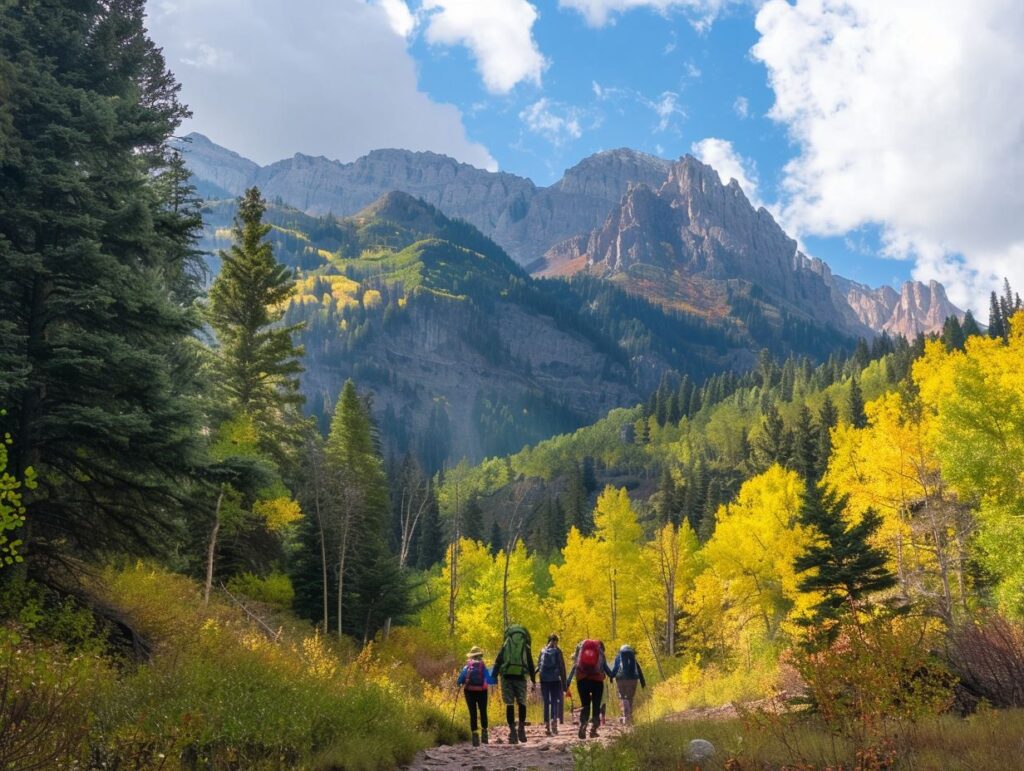Looking for a fun and rewarding way to bring different generations of your family together?
Embarking on a multi-generational hiking trip may be the perfect solution!
In this article, we will explore the numerous benefits of such an adventure and provide valuable tips on who should be involved in planning, factors to consider when choosing a location, how to prepare physically and mentally, and what activities and games to incorporate.
By the end, you’ll have all the tools needed to ensure a successful and enjoyable trip for everyone involved.
Key Takeaways:
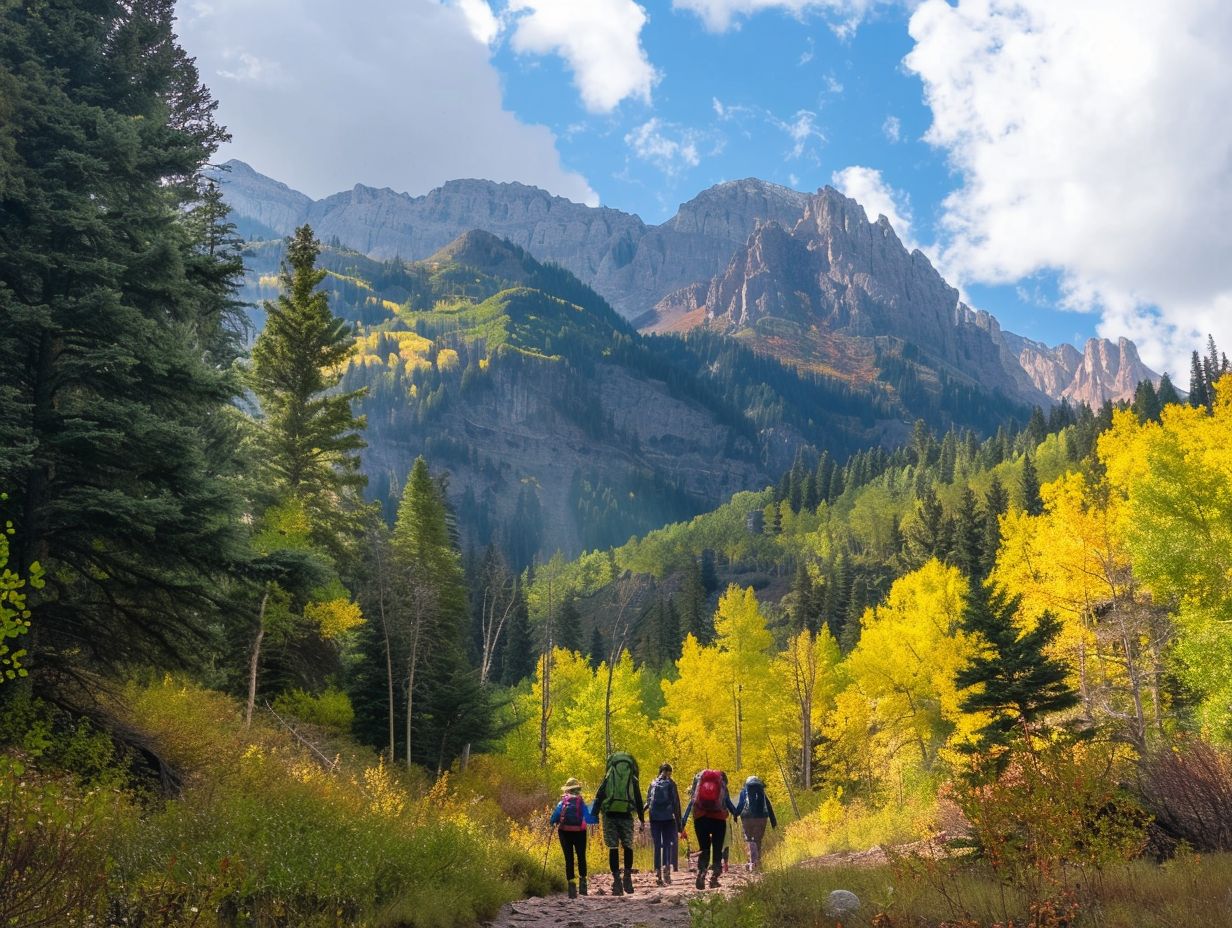
- Bond and create memories with family through quality time spent outdoors.
- Keep everyone’s physical abilities in mind when planning, but also incorporate fun and educational activities for all ages.
- Make safety a top priority and be prepared for any emergencies. Encourage communication, flexibility, and reflection for a successful and enjoyable trip.
Who should be involved in the planning process?
It is essential to involve the relevant individuals in the planning process to ensure a successful multi-generational hiking trip that meets the needs and expectations of all participants.
1. Family Members of All Ages
Incorporating family members of various age groups, ranging from grandparents to children, ensures that the trip is tailored to meet the preferences and requirements of everyone involved.
When organising a family trip, acknowledging the distinct roles of different family members in the decision-making process can significantly enrich the overall experience.
Grandparents may lean towards more tranquil activities, such as leisurely sightseeing or relishing local cuisine, while children might be enthusiastic about engaging in adventurous excursions or visiting exciting attractions.
By taking into consideration these diverse preferences, a well-rounded itinerary can be formulated that appeals to all individuals. Engaging each family member in the planning phase promotes a sense of cooperation and reinforces familial bonds, culminating in the creation of enduring memories and the nurturing of deeper relationships.
2. Experienced Hikers or Guides
Incorporating experienced hikers or guides into the planning process can offer valuable insights and ensure the safety and enjoyment of the trip. They possess expertise regarding optimal routes, suitable hiking times, and essential precautions to consider before commencing the journey.
Their familiarity with local conditions, wildlife behaviours, and emergency procedures can significantly contribute to risk mitigation and adept handling of unforeseen circumstances.
Consulting with travel professionals and experienced hikers allows participants to access tailored itineraries that align with their skill levels and preferences, thereby enhancing the overall experience.
This collaborative approach not only prioritises safety but also enriches the adventure by leveraging a wealth of knowledge and experience.
3. Local Experts or Tour Companies
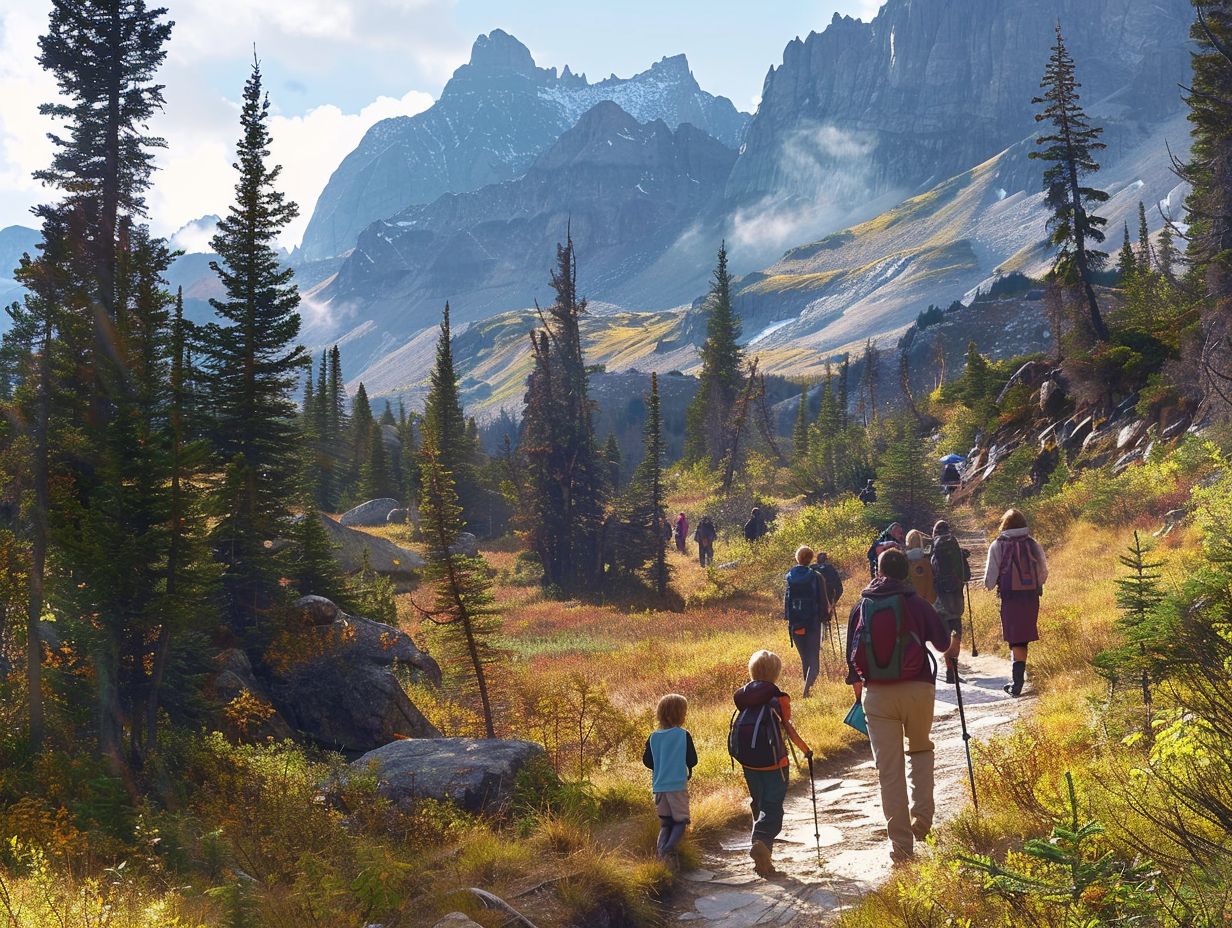
Utilising the services of local experts or tour companies can greatly enrich the planning process as they offer intricate knowledge about travel destinations and available activities.
Local experts possess valuable insider information, including optimal timings for visiting popular attractions to avoid crowds and undisclosed hidden gems that lie away from the usual tourist trails. Additionally, they are adept at suggesting exclusive activities not commonly featured in guidebooks, thereby enabling travellers to partake in a more genuine and immersive experience.
Tour companies play a pivotal role in providing logistical support by organising transportation, accommodation, and even securing special permits or tickets. This comprehensive assistance streamlines the trip planning process, enhancing its efficiency and effectiveness.
What Factors Should Be Considered When Planning?
When organising a multi-generational hiking trip, it is imperative to carefully consider several key factors to ensure the safety, comfort, and enjoyment of all participants.
1. Physical Capabilities and Limitations
Understanding the physical capabilities and limitations of each family member is crucial in devising a trip that is enjoyable for all participants.
By taking into account variables such as age, fitness levels, and any specific requirements, it is possible to customise outdoor activities and trails to cater to the diverse needs of the group.
For older adults or individuals with mobility constraints, selecting easier and more accessible routes can ensure their comfortable participation. Young children may find shorter hikes or interactive nature walks more appealing to sustain their interest.
Moreover, it is imperative to incorporate breaks along the journey and offer a range of activities to accommodate varying energy levels. By being attentive to these disparities, a memorable and inclusive outdoor experience can be crafted for every member of the family.
2. Weather and Season
Weather and seasonal conditions are pivotal factors to consider when planning a multi-generational hiking excursion.
Deliberating on the optimal timing for your hike can profoundly impact the overall experience. Typically, spring and autumn emerge as the favoured seasons for hiking due to their moderate temperatures and flourishing flora.
Whilst summer promises extended daylight hours, it can also introduce intense heat in specific locations, prompting a preference for early morning or late afternoon treks. Winter hikes necessitate meticulous preparation to contend with icy terrain; hence, it is imperative to equip oneself with appropriate gear such as waterproof boots and layered clothing to combat the cold.
To adapt to variable weather patterns, conduct comprehensive research on the climate of your chosen destination and pack accordingly.
3. Location and Terrain
The selection of an appropriate location and terrain is of paramount importance to ensure that the trip meets the needs of all participants and offers a diverse range of activities.
When choosing a travel destination, it is imperative to take into account the preferences and capabilities of all members of the group. Families with children, for example, may find that selecting destinations with family-friendly hiking trails can greatly enhance the overall travel experience.
The terrain of a location significantly influences the level of challenge and engagement experienced during the trip, with mountainous regions offering breathtaking vistas and coastal areas providing opportunities for relaxation and water-related activities.
Prominent family-friendly hiking destinations such as Zion National Park in the United States or the Lake District in the United Kingdom serve as exemplary instances of locales that cater to a wide range of age groups and deliver memorable outdoor experiences.
4. Safety Precautions and Emergency Plans
It is imperative to establish safety measures and develop contingency plans to ensure a successful and secure hiking expedition. Adequate travel insurance cover can offer added assurance in unforeseen circumstances.
Thorough research of the destination and an understanding of potential risks associated with the hiking endeavour are essential preparatory steps. A well-equipped first aid kit, ample water and snacks, appropriate attire and gear, and communication tools such as a fully charged mobile phone or portable GPS are essential for enhancing the safety of the journey.
Sharing the itinerary with a trusted individual, adhering to designated paths, and monitoring weather forecasts are critical actions to safeguard the well-being of all participants throughout the excursion.
How to Prepare for a Multi-Generational Hiking Trip?
Thorough preparation is essential for facilitating a seamless and enjoyable multi-generational hiking expedition, encompassing aspects ranging from physical conditioning to the selection of suitable equipment.
1. Physical Preparation and Training
Proper physical preparation and training are essential to ensure that all participants are adequately prepared for the hike and can fully experience the health benefits it offers.
When devising a training regime, it is imperative to emphasize a blend of exercises that specifically target the enhancement of both endurance and strength. This can be achieved by incorporating a variety of activities such as hiking, running, cycling, and strength training to ensure a comprehensive approach.
Gradually increasing the intensity and duration of these exercises is crucial in facilitating safe and sustainable progress for individuals.
Consistency in training is paramount; therefore, it is recommended to establish a regular schedule of physical activity to effectively maintain and enhance fitness levels. It is important to pay close attention to one’s body, maintain proper hydration levels, and ensure sufficient rest to adequately support one’s training endeavors.
2. Gear and Equipment Checklist
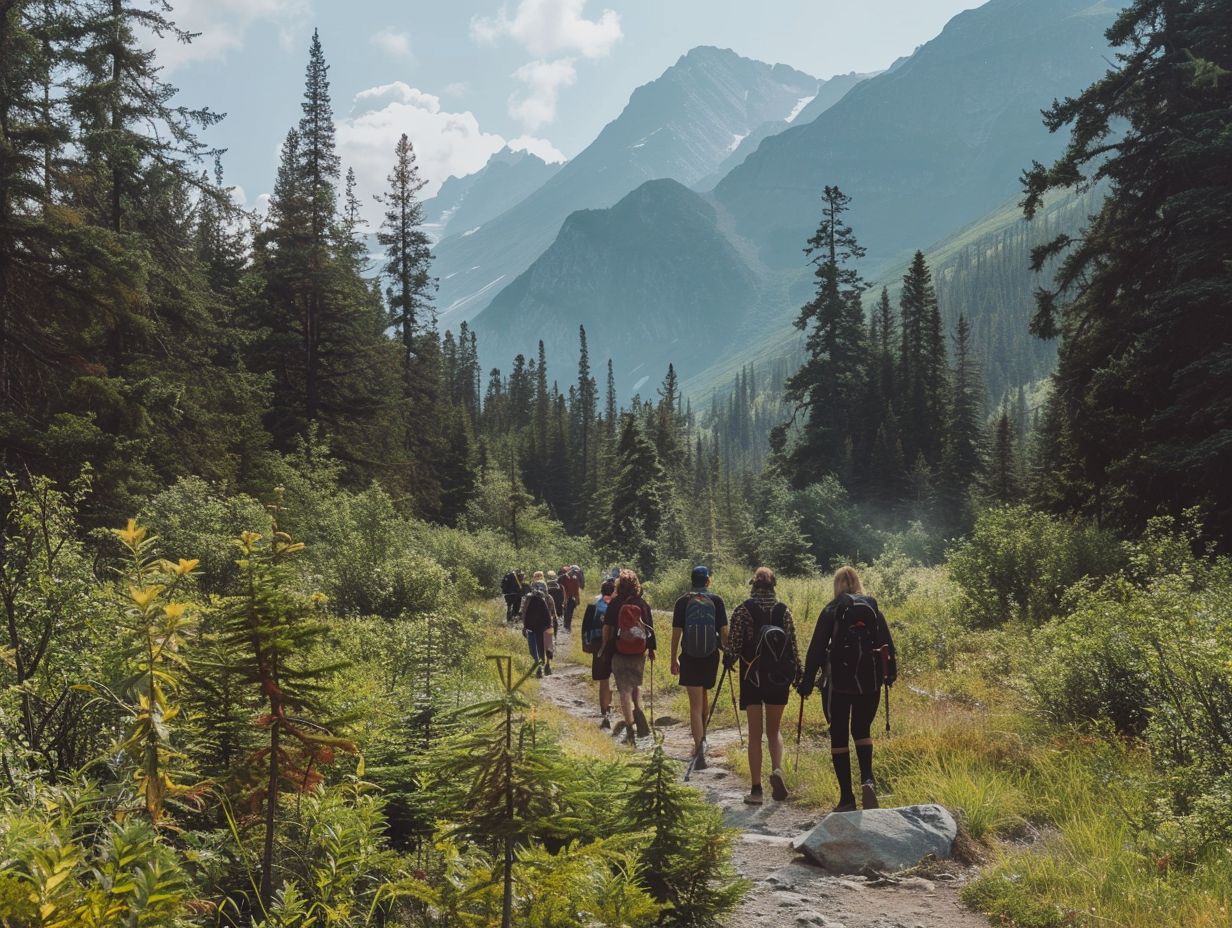
It is imperative to have the appropriate gear and equipment to ensure a safe and comfortable hiking experience.
When making preparations for a hike, one should carefully consider clothing suitable for the prevailing weather conditions, including moisture-wicking layers, waterproof outerwear, and a hat for protection against the sun. Additionally, quality hiking boots and socks are essential to prevent blisters and offer necessary ankle support.
The inclusion of navigation tools such as a map, compass, or GPS device is essential for maintaining the right course. Safety items, including a first aid kit, whistle, torch, and emergency shelter, should always be carried in one’s rucksack.
These practical travel recommendations can guarantee that individuals are adequately equipped for any outdoor adventure on the trails.
3. Packing Tips and Tricks
Efficient packing strategies can have a significant impact on the convenience and overall enjoyment of a hiking trip. It is crucial to maximise space-saving techniques, such as rolling clothes instead of folding them, utilising packing cubes for organisation, and selecting versatile clothing items that can be easily mixed and matched.
Additionally, including comfort-enhancing items like a lightweight and compact sleeping bag, a portable camping stove for preparing family-friendly meals, and a durable water bottle are important considerations.
Furthermore, incorporating family-friendly activities into the packing process ensures the inclusion of items such as a pack of cards, a travel-friendly board game, and a camera for capturing memorable moments shared together.
What Activities and Games Can Be Incorporated During the Trip?
By introducing a variety of activities and games during the hiking trip, it is possible to enhance the experience and ensure that individuals of all age groups within the family stay involved and entertained.
1. Scavenger Hunts and Nature Bingo
Scavenger hunts and nature bingo represent exceptional family-friendly activities suitable for participants of all age groups.
The organisation of a scavenger hunt or nature bingo event serves as a valuable method to foster teamwork and stimulate creativity within family units. The initiation of a successful scavenger hunt involves the creation of a carefully curated list of themed items to locate, such as specific varieties of leaves, flowers, or wildlife specimens.
Conversely, in the case of nature bingo, the preparation of bingo cards featuring images or descriptions of diverse elements encountered in nature, such as birds, rocks, or insects, is recommended.
These engaging activities not only offer entertainment but also facilitate communication, problem-solving, and outdoor exploration, thereby contributing to a memorable bonding experience for all participants involved.
2. Educational Activities and Lessons
Educational activities and lessons centred around nature serve as invaluable learning opportunities for individuals of all ages, including children and adults.
Participating in activities like nature walks, observing wildlife, and receiving instruction on the local flora and fauna can deeply enhance one’s comprehension and admiration of the environment.
These experiences not only aid in cultivating a sense of responsibility towards nature but also stimulate curiosity and critical thinking abilities. By integrating such activities into a programme or excursion, participants can fully engage with the splendour of the natural world and acquire insights into the ecosystem that surrounds them.
3. Team Building and Trust Exercises
Engaging in team building and trust exercises can significantly enhance familial bonds and facilitate effective communication and collaboration throughout the duration of the trip.
These activities span a spectrum from simplistic icebreakers to more intricate challenges such as rope courses or scavenger hunts, offering opportunities for family members to collaborate towards a shared objective. Through participation in such activities, families can enhance their problem-solving capabilities, cultivate mutual trust, and nurture a sense of unity and connection.
The prudent approach involves selecting activities that are suitable for the age groups represented within the family and that align with the varied interests and capabilities of all family members. This approach ensures that each individual is actively included and valued in the bonding experience.
How to Ensure a Successful and Enjoyable Trip for All Generations?
Facilitating a successful and pleasant journey for all age groups necessitates flexibility, transparent communication, and ongoing encouragement and support.
1. Flexibility and Communication
Flexibility in planning and open communication among family members are fundamental elements of a successful multi-generational hiking expedition.
When engaging in such a trip, it is imperative to exhibit adaptability towards plans, as unforeseen circumstances, such as abrupt weather changes or unanticipated trail closures, may arise.
Sustaining transparent channels of communication within the group is vital for identifying and addressing potential conflicts before they escalate. Encouraging all members to express their viewpoints and concerns is essential for ensuring that decisions are reached collectively.
To facilitate efficient communication throughout the journey, it is beneficial to establish a designated daily meeting time to review the day’s itinerary and address any emerging issues. This practice aids in keeping all participants informed and aligned with the group’s objectives.
2. Encouragement and Support
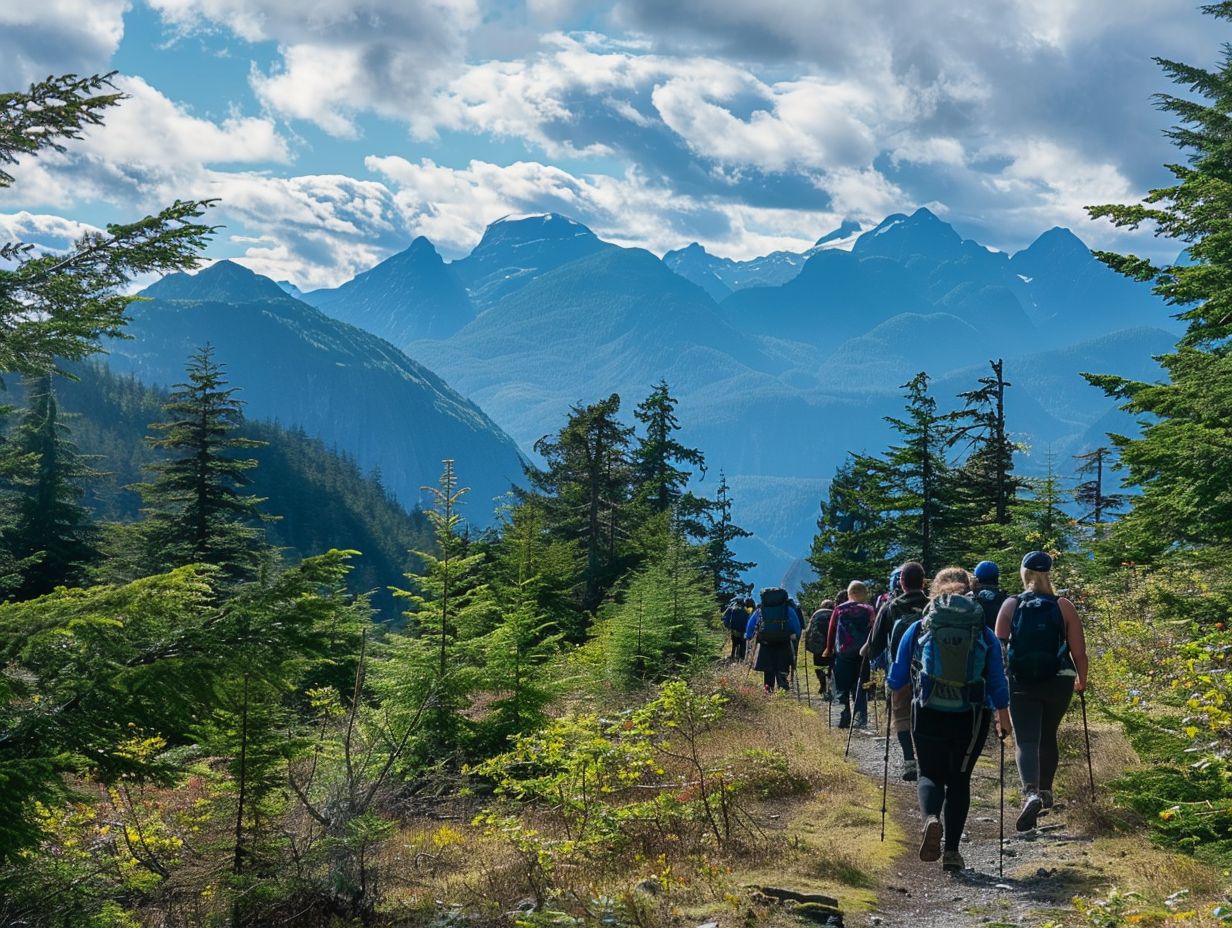
Ensuring continual encouragement and support for all family members is imperative to promote a sense of value and motivation throughout the duration of the trip.
It is crucial to establish an environment within the family that fosters recognition and give the power toment for each member. This practice not only fortifies familial connections but also nurtures feelings of belonging and security among all individuals. Provision of assistance during challenging circumstances can stimulate resilience and solidarity within the family structure.
Simple gestures such as active listening, offering positive affirmations and extending a helping hand hold significant potential to generate a meaningful impact. Commemorating accomplishments, irrespective of their scale, serves to elevate spirits and promote sustained progress and advancement.
3. Reflection and Appreciation
Engaging in moments of reflection and demonstrating gratitude for the shared experiences can transform a hiking excursion into a truly unforgettable holiday. Reflecting on the trip enables each family member to remember special moments and foster connections through mutual memories.
It is essential to show appreciation for the collaborative efforts exerted by all individuals, whether in navigating the paths or preparing meals. By acknowledging and valuing each other’s contributions, the trip transcends beyond mere recreational activity, evolving into a profound journey enriched by shared experiences and interpersonal connections.
Cultivating a practice of gratitude not only enhances the trip itself but also strengthens familial relationships, culminating in lasting memories that will be treasured for years to come.
Frequently Asked Questions
What factors should I consider when planning a multi-generational hiking trip?
When planning a multi-generational hiking trip, it’s important to consider everyone’s physical abilities, interests, and preferences. You should also think about the location, length, and difficulty level of the hikes, as well as any necessary accommodations.
How can I involve all generations in the planning process?
Involve everyone in the planning process by asking for their input and suggestions. This will ensure that everyone feels included and excited for the trip. You can also assign specific tasks to different generations, such as researching activities or booking accommodations.
How can I make the trip enjoyable for all ages?
To make the trip enjoyable for all ages, plan a variety of activities and hikes that cater to different interests and abilities. Consider including shorter, easier hikes for younger children and longer, more challenging hikes for adults. You can also plan non-hiking activities, such as sightseeing or relaxing at the campsite.
What should I pack for a multi-generational hiking trip?
Pack essential items such as appropriate clothing, comfortable shoes, a first aid kit, sunscreen, bug spray, and plenty of water and snacks. You may also want to bring games, books, or other activities to keep kids entertained during downtime. Don’t forget to pack any necessary medication or medical supplies for older family members.
How can I ensure the safety of all generations during the trip?
Safety should be a top priority when planning a multi-generational hiking trip. Make sure to research the area and trails beforehand, and choose routes that are suitable for everyone’s abilities. Establish a meeting point and plan for emergencies. It’s also a good idea to have a first aid kit and emergency contact information readily available.
What can I do to make the trip more memorable for everyone?
To make the trip more memorable for everyone, consider planning special activities or traditions that everyone can participate in. This could be a family cookout, a game night, or a group photo at a scenic viewpoint. You can also encourage everyone to share stories and memories from past family trips or create new memories together on this trip.

